Paying Tribute to the Scientists of the 16th & 17th Centuries
- By Koji Mukai
- August 15, 2011
- 1 Comment
We all know that Nicolaus Copernicus revolutionized our view of the universe. Who would you pick as the top scientists who further developed astronomy during the 16th and 17th centuries? I would pick Tycho Brahe, Johannes Kepler, Galileo Galilei, Isaac Newton, and Edmond Halley as my top five. I got to think about these giants of the field during my recent European trip, as I had the chance to see sights connected directly to three of these five, and indirectly to a fourth.
Halley’s major contribution was that he calculated the orbit of the comet that now bears his name – he applied his friend Newton’s laws of physics, and realized that the comet of 1682 had previously been seen in 1531 and in 1607, and predicted, correctly, its return in 1758. In this, he went beyond Newton and included the approximate effect of the gravity of Jupiter.
During its return in 1986, several spacecraft visited Halley’s comet, including European Space Agency’s Giotto mission. When a space probe is named after a person, that person usually is a famous scientist. In this case, though, ESA picked Giotto, who was an architect and a painter, and I got to see one of his masterpieces, the Scrovegni Chapel in Padua (Padova), Italy. Giotto painted many religious scenes in the year 1305 or so in the interior of this chapel. In one of them, the Adoration of the Magi, he incorporated his interpretation of the star of Bethlehem – a comet. This is widely thought to have been inspired by the sight of Halley’s comet from its appearance in 1301, 5 orbits before Halley saw it, and 9 orbits before Giotto the spacecraft would visit it.
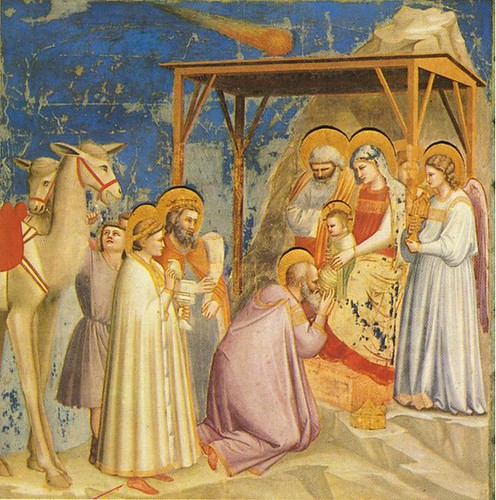
Adoration of the Magi, by Giotto
I was in Padua for a conference, the main organizer of which is a member of University of Padua – a university with a long, illustrious history. For example, Galileo was a professor of mathematics at this university from 1592 to 1610 – including when he trained his telescope on the heavens and discovered the 4 major moons of Jupiter.
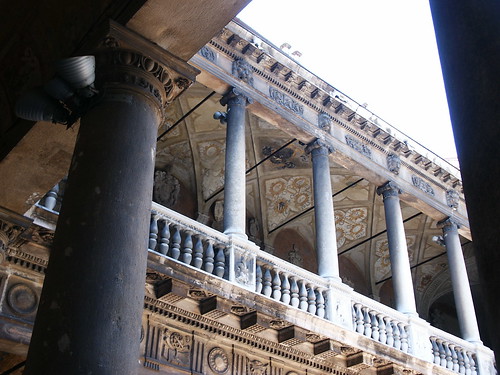
The Palazio Bo, a historical building of the University of Padua, where Galileo once taught. Credit: Koji Mukai
The week before the conference in Padua, I attended another conference in Berlin. I decided to spend the weekend in between in Praha (Prague), the Czech Republic, for the usual touristy reasons. It turns out, though, that Praha has a connection with Tycho and Kepler.
Tycho was Danish, and his observatory, where he meticulously observed and recorded the positions of the planets, was also in Denmark (but is now in Sweden). Tycho was later invited to Praha by the Holy Roman emperor, Rudolf II, and became the imperial astronomer there; and it was in Praha that he died in 1601, possibly by mercury poisoning (and there is even speculation that he was murdered – I’m glad modern astronomy is less cut-throat). Tycho is buried in the Tyn Church in the center of Praha, and of course I had to pay my respects.
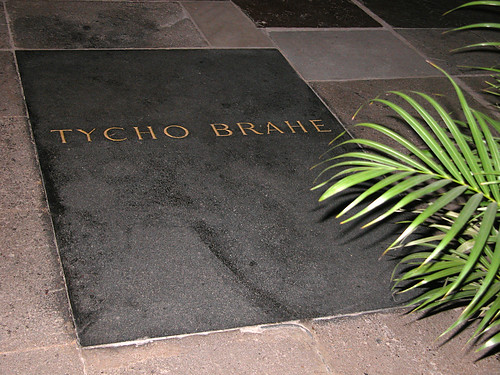
The grave of Tycho Brahe, in Tyn Church, Stare Mesto, Prague. Photo taken by Robert Scarth, 26th May 2006. (Another full image)
It was Johannes Kepler who made full use of Tycho’s superb data and deduced that the orbits of planets are ellipses, not circles as Aristotle and even Copernicus assumed. Kepler became an assistant to Tycho in 1600, succeeded him as the imperial astronomer, and lived in Praha until 1612. (One book, “Heavenly Intrigue,” argues that it was Kepler who murdered Tycho for his data. For the record: I don’t have any data worth killing me for, and any data I do have are, or will shortly be, in the public archive!) So, in 2009, the international year of astronomy (to commemorate 400 years since Galileo’s telescope), a small museum was opened in Praha near where Kepler used to live. Its displays summarize Kepler’s accomplishments, and also include the Chandra X-ray image of the remnant of the supernova that he observed in 1604. One panel is dedicated to the Kepler mission, the NASA satellite to hunt for planets outside the Solar system. If you find yourself in Praha, it’s worth 30 min of your time to visit this little museum, near the famed Charles bridge.
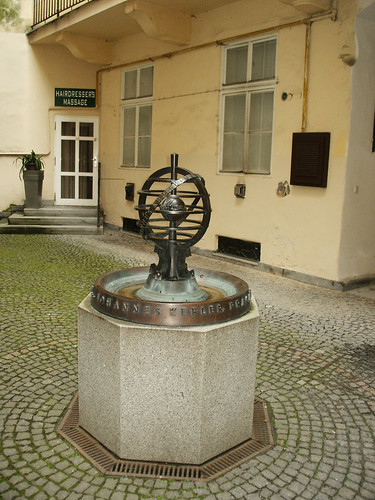
The small memorial outside the Kepler Museum. Credit: Koji Mukai
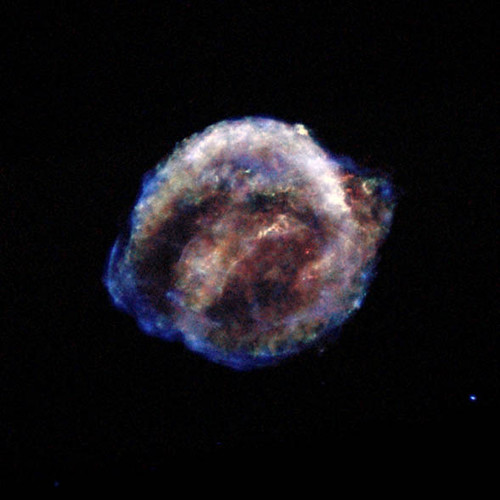
The Chandra X-ray view of Kepler’s supernova remnant. Credit: NASA/ESA/R. Sankrit and W. Blair (Johns Hopkins University)
If you’d like to also pay tribute to these great scientists, why not have a listen to the “AstroCapella” song that The Chromatics wrote about them?



Thanks for the history lesson on these scientists. Cool looking building there in Padua. Amazing the beauty that can be create physically and in the mind before television.